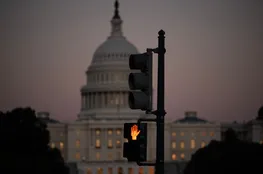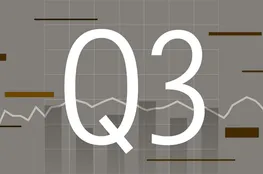The rise of low-income voters in the American electorate can't be ignored, and many believe Donald Trump may have an advantage in appealing to this demographic. In Feasterville-Trevose, Pennsylvania, a peculiar scene unfolded at an empty McDonald's, where former President Donald Trump donned a yellow-trimmed apron, engaged in a series of stunts to curry favor with working-class voters. By comparing his 15 minutes at McDonald's to Vice President Kamala Harris's youthful stint at the chain, Trump not only jabbed at his rival but also made a play for working-class empathy.
As the U.S. middle class shrinks, the working class comprises a larger share of voters. Pew Research shows those classified as low-income increased from 27% in 1971 to 30% in 2023. As election day nears, both major-party candidates are vying for these votes. According to a Progressive Policy Institute poll, Trump is viewed by many as a champion for working families, accruing 44% support from the working class compared to Joe Biden's 12%. It's a stark irony, given Trump's privileged background and business practices that often aren't worker-friendly.
Trump's interactions reflect his attempts to connect with these voters. At a Bronx barbershop, he likened himself to the working class, reinforcing emotional connections that date back to his 2016 campaign. Despite his 2020 defeat to Biden, the emotional ties remain strong among working-class voters. This demographic shift away from Democrats is traced to grievances over global job losses and party policies that seem unsupportive of working people. This sense of betrayal fuels Trump's narrative of a rigged system, resonating particularly with less politically engaged voters.
Their voting struggles, like employers not granting time off a polling day, further alienate them from the system. Trump’s ability to remain relatable, despite his wealth, contrasts with Harris, who, despite her middle-class origins, is perceived as part of the elite. Her political achievements and affluence, alongside policy proposals that rehash past Democratic promises without visible results, alienate her from low-income voters who resonate more with Trump's populist rhetoric. America’s economy remains a pivotal issue.
Harris has targeted middle-class 'sandwich generation' voters, while Trump targets financial alleviations like capping credit card interest rates and tax-deductible interest on car loans. Despite economic improvements, grocery prices remain a concern, with both candidates blaming differing causes. Yet, perceptions favor Trump on economic management. His policies, despite fallout from previous tariffs, gain traction as championing U.S. economic prosperity. Immigration further bolsters Trump’s support.
Historic strategies linking economic woes to undocumented immigrants still attract working-class voters, although experts argue these proposals would harm the economy. Trump’s adaptation of this narrative to non-white citizens, suggesting they compete for jobs with immigrants, is proving effective. Polls indicate a rise in Trump’s popularity among Hispanic and Black male voters, showcasing the demographic's complexity. Current pre-election polls show a neck-and-neck race between Trump and Harris.
Yet, with strategic appeals to working-class priorities, Trump may successfully recapture the victory he achieved in 2016, contingent on effectively addressing voter concerns in swing states like Pennsylvania, Michigan, and Wisconsin.
























